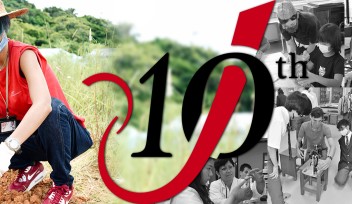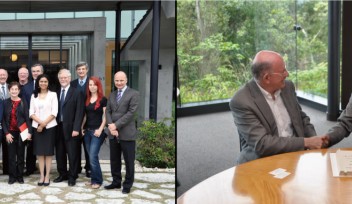Lecture by Dr. Gordon Arbuthnott
Lecture by Dr. Gordon Arbuthnott
of the Brain Mechanism for Behaviour Unit
March 12 at the Seinor High School Affiliated with Showa Pharmaceutical University
Brain Mechanism for Behaviour
In a lecture that fell on this year’s Brain Awareness week, Dr. Arbuthnott talked to a group of about 80 students, who are planning to pursue either medical science or pharmacy in a university. Originally from Scotland, Dr. Arbuthnott humorously began the talk by showing a photo of the traditional Scottish uniform as worn by his grandfather, a former captain in the Gordon Highlanders, and a map of Scotland with a town’s name, Arbuthnott.
On his research at OIST, Dr. Arbuthnott said his unit is investigating how the brain controls movement in order to understand the parts of brains that control behaviour. In an experiment that caught the students by surprise, Dr. Arbuthnott asked them to stand up and lean against the nearest wall. As the students found themselves able to lift the foot near the wall, but unable to do so when trying to lift the other foot, Dr. Arbuthnott explained that the difficulty is similar to what is experienced by people diagnosed with Parkinson's disease. Introducing the students to his past and ongoing research on the disease, which focuses on the role of dopamine in a rat’s behaviour, Dr. Arbuthnott explained that even though the dopamine precursor L-DOPA helps treat Parkinson’s disease, it still remains unknown how L-DOPA works in the brain.
Saying that one of the students might one day find the answer to the question, Dr. Arbuthnott concluded his lecture by stressing the importance of basic science in developing treatment for patients. He added that having curiosity and questions is the key to becoming a scientist.

Dr. Arbuthnott

Students listen to Dr. Arbuthnott

Dr. Arbuthnott takes a question from one of the students

Students who scored high in a quiz take home a small gift












